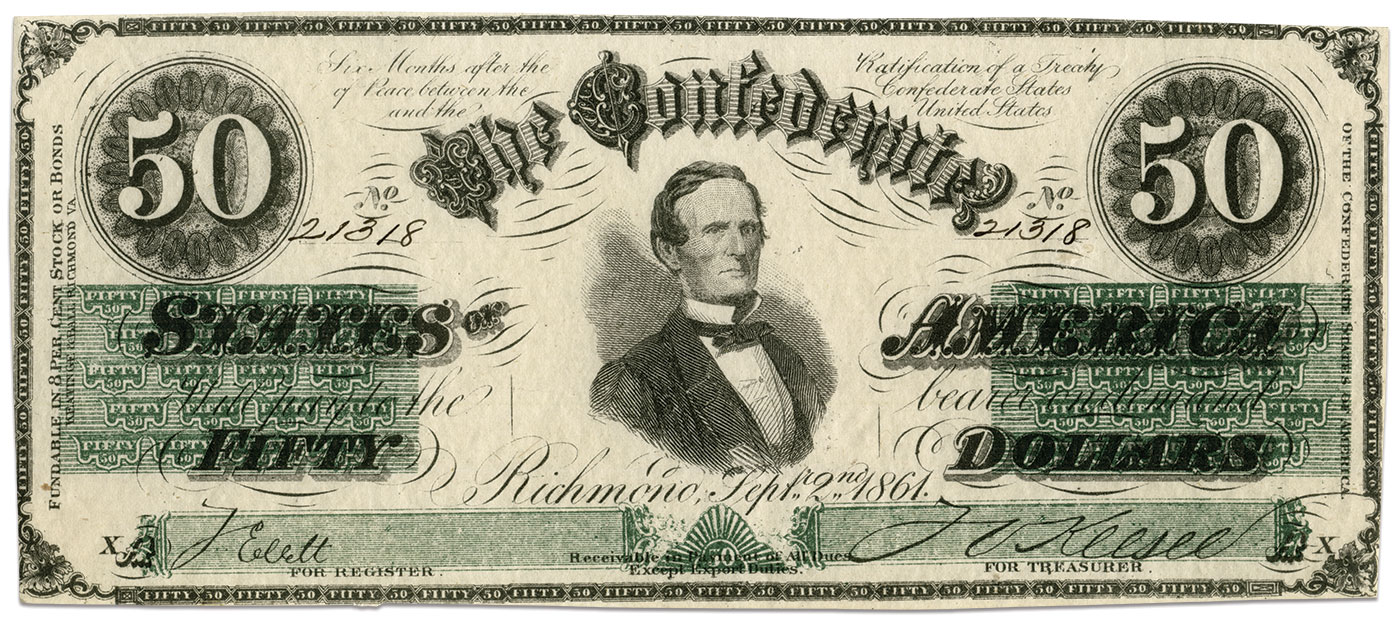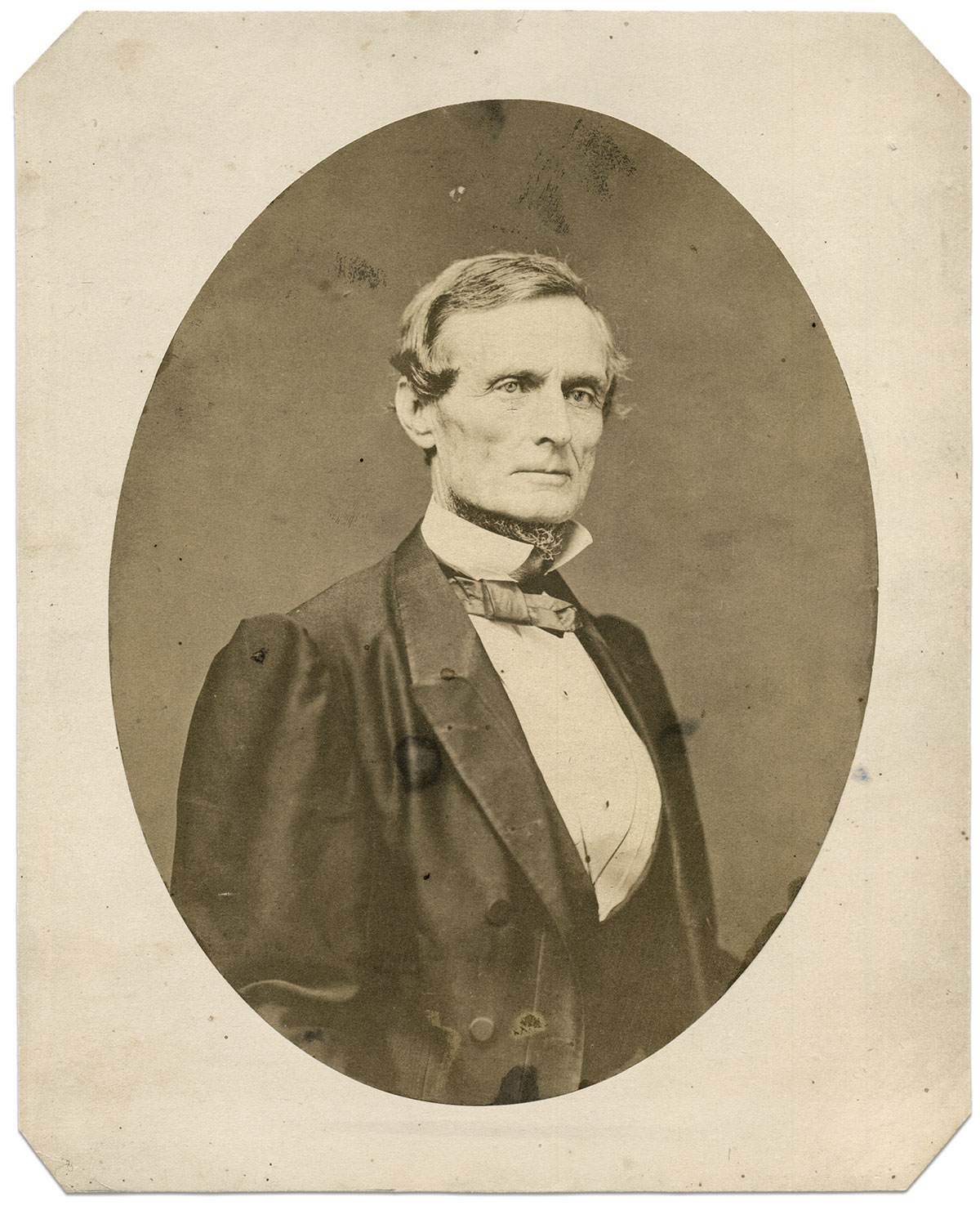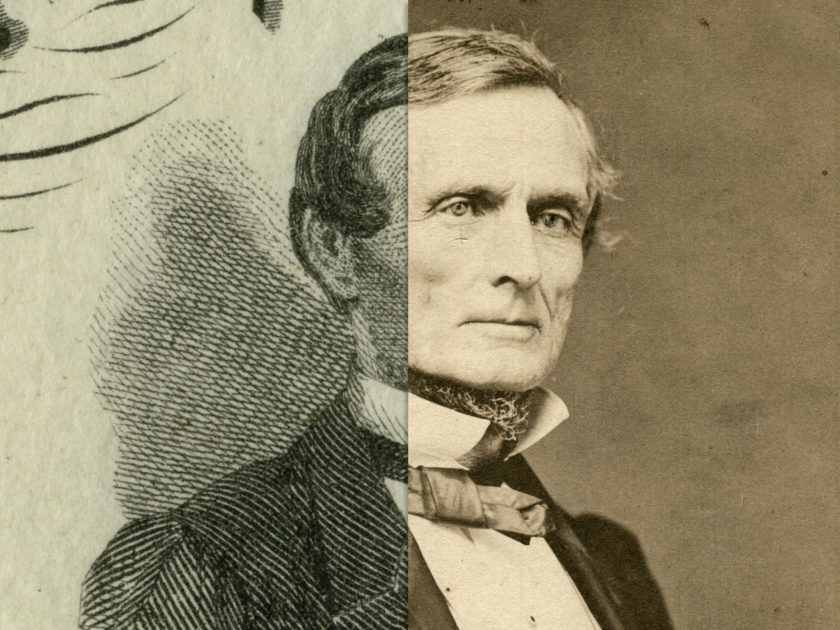By John O’Brien
Before President Jefferson Davis arrived in the new Confederate capital of Richmond, Va., on May 29, 1861, his likeness preceded him.
Cartes de visite and engravings of Davis, primarily based on Mathew B. Brady’s familiar portrait, had been widely distributed throughout the city. The image had been taken in 1859, when Davis served as a U.S. senator representing his home state of Mississippi. During the tumultuous two years that followed, he had changed little physically. Tall, slender and serious, he looked every bit the statesman. One can imagine that the citizens of Richmond observed he looked exactly like Brady’s photo.
This is the iconic portrait by which we know the Confederate President and Commander-in-Chief. And yet, another photograph of him better represents Davis during his tenure as the leader of the South. It was his only wartime portrait, according to his wife, Varina, who said as much to the editors of the landmark 1911 series The Photographic History of The Civil War.
Though she did not provide a date for the sitting, an engraving made from the photo appears on a $50 Confederate banknote issued on Sept. 2, 1861, and placed in circulation soon afterwards. One can reasonably conclude that the portrait was made prior to this time.

The circumstances that prompted the photo are unknown. Public admirers may have persuaded him to sit for a new image following the Confederate victory at First Manassas, or perhaps he bowed to the wishes of Confederate patriots for a Southern-made portrait to supplant Brady’s image.
Whatever the reason, Davis, who turned 53 in June 1861, visited a well-established Richmond gallery to sit for this historic image. Two Northern-born photographers operated the gallery. Pennsylvania native George W. Minnis (1819-1877) had worked as a daguerreotypist in Petersburg, Va., before opening an establishment in Richmond in 1857. Daniel T. Cowell (1831-1890) operated a studio in his hometown of New Haven, Conn., in the early 1850s, and settled in Richmond in the late 1850s.

Davis posed for two portraits during his visit to Minnis and Cowell. One view pictures him in a rather somber posture, wearing a dark jacket, light vest, white shirt with high collar. His loosely knotted dark tie rests slightly askew. The second image shows the tie tight and straight. This view became the engraving on the banknote. Davis brims with self-confidence, with his well-combed hair framing the fullness of his brow. His eyes are sharp and bright, though the pale left pupil indicates a permanent effect caused by an early bout with malaria.

Both views were subsequently copied and mass-produced in cities throughout the South. Most often, the portrait was made available as a carte de visite, though examples of large-format salt prints survive.
By 1862, the images had arrived in England and France. About this time, William E. Gladstone, the Chancellor of the Exchequer in the cabinet of British Prime Minister Palmerston, proclaimed, “We may have our own opinions about slavery, we may be for or against the South; but there is no doubt that Jefferson Davis and other leaders of the South had made an army; they are making, it appears a navy; and they have made what is more than either—they have made a nation.”
Gladstone’s pronouncement occurred at the zenith of Davis’ presidency. After the fall of Richmond in 1865, the Minnis and Cowell portraits appeared in various forms, including cabinet cards and illustrations, through the end of the century.
The two photographs may certainly rank as the definitive wartime images of Davis.
John O’Brien of Charles Town, W. Va., is a retired journalist and historian from the University of Connecticut, and a contributor to MI. The images reproduced here are from his collection.
SPREAD THE WORD: We encourage you to share this story on social media and elsewhere to educate and raise awareness. If you wish to use any image on this page for another purpose, please request permission.
LEARN MORE about Military Images, America’s only magazine dedicated to showcasing, interpreting and preserving Civil War portrait photography.
VISIT OUR STORE to subscribe, renew a subscription, and more.

